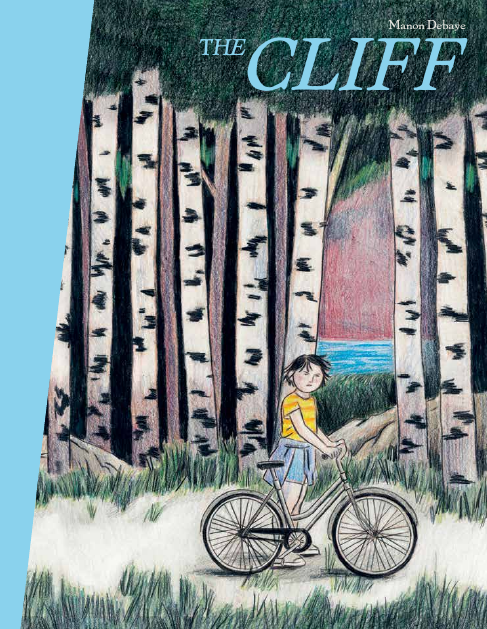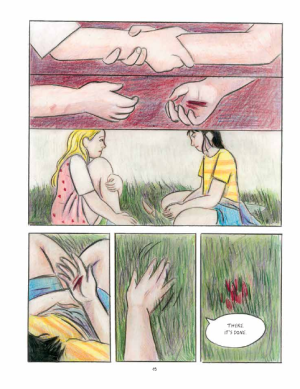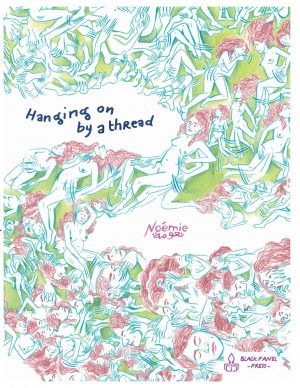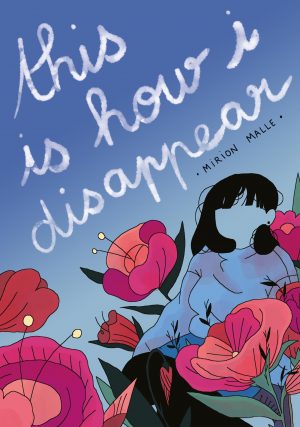Review by Ian Keogh
The massive rise in global suicide statistics is a damning statement about our societies. In 90% of successful incidents the person has been diagnosed with a mental disorder, with depression the most common. The most common cause of that is some form of abuse during childhood, although in Britain the ready availability of online information regarding how to commit suicide provides a convenient chattering bogeyman. Manon Debaye doesn’t have any more answers than the average person, but does have the means to create a powerful statement.
The Cliff occurs over a week, with Debaye breaking the chapters down into five days. The opening scene shows Astrid and Charlie sealing a blood pact to commit suicide together before Charlie’s fourteenth birthday, intending to jump from a cliff. When Charlie later announces this to her mother, it’s not taken seriously, which is powerful and horrifying given what we know. The following day we see the school dynamic between Astrid and Charlie, with Astrid bullied repeatedly and Charlie only half-heartedly attempting to stop her friends. That proves a pivotal theme.
Debaye’s characterisation of both girls reveals their inner torment and deep unhappiness, but the tragedy of their situation is their only feeling able to talk with each other. The insightful narrative is contrasted with deliberately bright illustration, perhaps accentuating why life is worth living after all in reflecting what for many others would be an idyllic youth in a picturesque seaside town. Debaye taps into perceived childhood memories of older readers, with people dressed not in clothes bearing designer names, but those of a simpler era. However, the cliff edge and the possibility of plunging from it is a motif both literal and symbolic.
Because Debaye toys with such illustrated symbolism there’s no definitive outcome, which is clever rather than disappointing. Those with a hopeful outlook can view the final chapter’s events positively and those tending toward pessimism will form a different opinion. Either way Debaye manages to shock with apparent simplicity in what’s a unique and memorable graphic novel.





